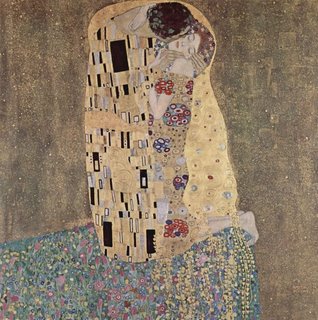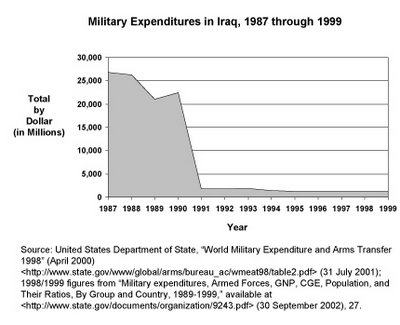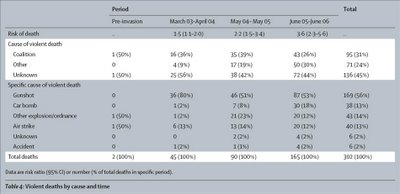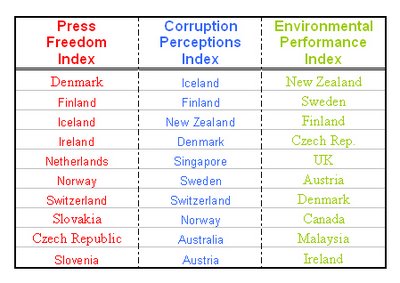Wednesday, November 29, 2006
quOTe oF thE dAy
Sunday, November 26, 2006
Dutch voters divided but not chaotic
The results of Dutch Parliamentary elections of last Wednesday were interpreted as rather chaotic, even by experienced politicians like Finance Minister Gerrit Zalm of the Liberal Party. Although the formation process of coalition will not be smooth, the results do not necessarily indicate a chaotic message from the electorate. There were certain indicators pointing in this direction even before the elections. More importantly, there are some clear instructions that the Dutch electorate (albeit divided) gave to the next four years of Dutch politics.
Simply put, the results were a clear victory for the Socialist Party (SP) that almost tripled its seats in the 150-member parliament, while three other small parties received considerable support: the centre-left conservative ChristenUnie (from 3 to 6 seats), populist PVV (9 seats in the first elections they attended), and the novice animal-rights party PvdD (2 seats in their first elections). If the values and norms were the most important issues of the elections as the PM Balkenende, the leader of the biggest party CDA (Christian Democrats) has put, the results were not a surprise. All the winning parties are based on strong ethical stances –on whichever side of the spectrum they may be. Another common characteristic of these parties was their small but congenial components. The mass parties, on the other hand, particularly the Labour Party (PvdA) which showed signs of a much less coherent internal structure and disagreements among the cliques within the party, have lost votes. In either case the shift was from the centre to the both sides of the left-right spectrum.
Traditionally, Dutch political parties can be understood on a basis of left-right and conservative-progressive spectrum. While the electorate seems to have shifted from the right to the left, they also shifted towards more conservative parties, including the Socialist Party with its careful selection of mainly domestic issues. This may as well be regarded as another reason for the SP to succeed, as the major concern of the electorate has been domestic politics. While questioning the Labour and Liberals leaders on their own grounds, SP spurred the votes of the urban poor, as well as the electorate unsatisfied with the Labour that makes up 24% of SP’s votes. Neo-liberal policies of the last few years were obviously not further supported.
Throughout the pre-electoral debates, issues of foreign policy, Turkey’s accession into EU, or EU politics in general were downplayed. Despite a last minute leak of alleged torture incidents by army officials in Iraq, the wars in the Middle East were hardly ever mentioned. Either of the coalition possibilities however, will affect the EU integration (particularly that of Turkey) negatively. While the SP is pro-Turkey’s entrance, they are very reluctant on further integration, particularly on the basis of protection of Dutch workers, CU is against Turkish integration on the basis that Christian values are an integral part of European identity. In the 2005 referendum on the European Constitution the SP was the only left-wing party in parliament to oppose the European constitution. Most winners of the election were against the European Constitution as well.
Another issue that was not high on the agenda was that of immigration. While the PVV, a one-theme party of strong anti-immigration measures has won some 9 seats, in the post-election debates all possible coalition partners to CDA made it clear that they would not join any coalition with them. On the same debate, the word "Muslim" was not mentioned even once. The VVD, that promotes the principle of non-discrimination rather than the exercise of religion, and hard measures on issues of immigration has lost 6 of their 28 seats in the former parliament, and the luxury of being the second biggest party. The government announced plans to ban wearing the burqa and face veil in public, right before the elections without any major controversy. The news were not on the first pages of the newspapers, nor the issues of integration and immigration were a main issue in election preferences for more than 4% of the voters according to NIPO’s opinion polls. The policies regarding immigration are likely to remain strong (against the thousands of immigrants already in the legal process), and based on integration of the mainly Muslim groups from Turkey and Morocco, a shift from the progressive, tolerant, multiculturalist attitude that has declined since the murder of Pim Fortuyn 9-days before the 2003 elections. Fortuyn based his politics on the Dutch identity and suggested a strong stance for integration of Muslim communities, which caused a shift in most parties’ discourse on the issue.
The bargaining process has already started, yet to distil a government from these election results might be difficult for PM Balkenende, but this is the case in most central European countries. In the Netherlands, however, the issues are neither that of immigration nor of EU integration. The focus of the Dutch voters is homeland, which might as well bring about a less ambitious role for the country in international political arena.
Friday, November 24, 2006
The pope talks about the sanctity of life these days...
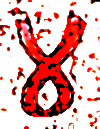 "Don't reject or abandon AIDS victims," Pope says, according to The Star, today.
"Don't reject or abandon AIDS victims," Pope says, according to The Star, today.How many lives could be saved if he only said "yes, it is all right to use condoms in marriages when one of the spouses are HIV infected." He didn't yet. Maybe he will in the next few months, and it will sound as if he did a good job after this many years. No, I'm afraid I do not regard popacy as a post, but rather kind of an incarnation of the same old story-teller. I know, it is weird. But it is also weird to need someone's approval to protect yourself from HIV/AIDS, and millions of people do need his approval.
According to the Guardian, it's estimated that 40 million people are HIV positive and 8,000 lives per day are lost due to AIDS. Their god obviously didn't think of situations in which "bringing life" and "being fruitful and multiply" also meant bringing the death to innocent individuals (particularly, those they appear to care most about: the unborn, as George Carlin says, the "sanctity of life" is something that is rather negotiable. Depends on who's doing the killings, and who's being killed)... Carlin continues:
"One phrase that come up quite a bit in abortion discussions is "sanctity of life." What about that? Do you think there's a thing as sanctity of life? Personally, I think it's a bunch of shit. Who says life is sacred? .....god? Great, but if you read your history you know that god is one of the leading causes of death and has been for thousands of years. Hindus, Moslems, Christians, Jews, all taking turns killing one another, because god told them it was a good idea. The sword of god, the blood of the lamb, Vengeance is mine, onward Christian soldiers. Millions of dead people.
All because they gave the wrong answer to the god question:
Do you believe in god?
No?..
BAM! Dead.
How about you? Do you believe in god?
Yes...
Do you believe in MY god?
No.
BAM! Dead!
My god has a bigger dick than your god.
For thousands of years all the bloodiest and most brutal wars have been based on religious hatred. Which of course, is fine with me; anytime "holy" people are killing one another, I'm a happy guy......but please, don't kill each other and give me that shit about sanctity of life."
The pope talks about the sanctity of life these days... Let's see if he will mention the word in his visit to Turkey, about which Merkel said Turkish government should be careful if they do not want trouble...Which brings me back to our age old ego-centric question: Why are we here? (Carlin replies: Plastic!A...)
QuOtE of THe daY
Thursday, November 23, 2006
Elections in the Netherlands
 at the back (shades) you can see election results of 2003. for more info on parties, try wikipedia:
at the back (shades) you can see election results of 2003. for more info on parties, try wikipedia:Parliamentary parties
Parties with representation in the Eerste Kamer, Tweede Kamer and European Parliament, as of September 2005:
- Christian Democratic Appeal (Christen-Democratisch Appèl)
- Christian Union (ChristenUnie)
- Democrats 66 (Democraten 66)
- Green Left (GroenLinks)
- Labour Party (Partij van de Arbeid)
- List Pim Fortuyn (Lijst Pim Fortuyn)
- Socialist Party (Socialistische Partij)
- Political Reformed Party (Staatkundig Gereformeerde Partij)
- People's Party for Freedom and Democracy (Volkspartij voor Vrijheid en Democratie)

Monday, November 20, 2006
QuoTE of ThE DAy
Polemics, politics, and problematisation, 1984:329
ps. I like Foucault... he disturbs me. :)
Local Greens unveil party program
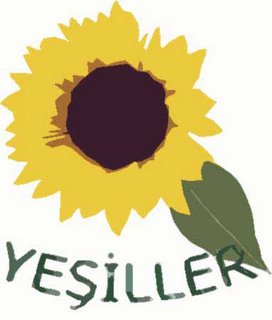
Turkish Daily News, November 20, 2006
by IŞIL SARIYÜCE, IstanbulGenerating the latest ripples in the Turkish political scene, the Greens discussed their future party platform in an open debate with the public in Istanbul during the weekend. Despite the low public turnout, general coordinator Kadir Dadan said he was hopeful that the Greens would run in Turkish local elections in 2009.
The point most emphasized in the meetings was the call for creating a new and democratic constitution that does not restrict liberties. Greens seek to have a party platform that ranges from domestic issues, such as ethnic conflicts, to global problems like climate change. The Greens have oriented their platform to focus on ecology, the economy, justice and fair income distribution.
The Green movement in Turkey began in the 1980s with opposition to the building of a thermal power plant in Gökova and a nuclear power plant in Akkuyu. The Green Party was officially recognized in Turkey between 1988 and 1994. Since 2002, the goals of improving political activities and establishing a new Green Party in Turkey have been revived, said Ümit Şahin, climate change coordinator.
Over the weekend Greens discussed their draft party program with the public, which according to attendees, was an unusual move in Turkish politics. The Green leaders stressed transparency and democratic structure, which they said has been lacking in Turkish political tradition. Debates about Turkey's EU membership were lively.
Anne de Boer, a local counselor of Dutch Green Left Party was in Istanbul to attend program conference of Greens. "There has been a lack of green color in the Turkish political scene" in the past and the Greens here are still not strong enough, said Boer. However, he said that the Greens have already achieved substantial progress, noting that they have a decentralized structure that differs from other Turkish parties and, as an observer member in the European Green Party, have strong international ties to other Green parties.
De Boer sees a positive path ahead for the Green movement, but finding their way into Turkish Parliament might require a change in Turkey's election law. "It has an anti-democratic character," he said, referring to the law that requires a party to win at least 10 percent of the vote in order to be represented in Parliament. Under this law, the majority of Turkish voters are not represented by the party they elected.
He said that when he first came to Turkey in 1984, he noticed posters that read, "Turkey is ready for Europe." "It was strange to see these just after the [1980] coup, but currently I believe Turkey is ready and that Europe needs Turkey."
In some areas such as environmental policy, negotiations in Turkey will be difficult, De Boer said, because special interest groups such as big companies will want to interfere and create obstacles. "The people who want a democratic Turkey must speak out" he said.
Sunday, November 19, 2006
On Whips...
"But what exactly IS a whip? He is the enforcer. And the favor bookkeeper. And the rules wonk. And, if you’re a congressman or woman, he might know even more about your district than you do. Cross him at your own peril. The term “whip” comes from the British House of Commons, which in turn took it from foxhunting. The “whipper-in” whips the dogs to keep them chasing the fox as a pack, and likewise the whip keeps the party members voting together. When a party’s leadership deems a particular roll call vote an important one, they call in the whip and his deputies, who first serve as pollsters, tallying how many members are on board, undecided, or against the measure (the “whip count”). "
Hence the whip being regarded as something powerful is no surprise. So what exactly IS a whip? Etymologically it comes from Middle English wippen, whippen; akin to Middle Dutch wippen to move up and down, sway, Old English wIpian to wipe.
With a big leap I will post a painting that the issue reminds me of (If you are interested in Genre Painting, you probably already heard of Bruegel or Brueghel, otherwis
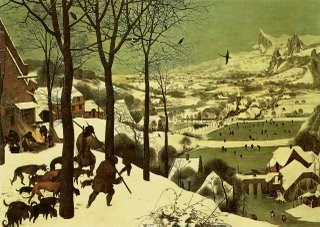 e click on the link below):
e click on the link below):Pieter Bruegel's Hunters in the Snow, on which New Scientist says:
"A painting tells a thousand tales. Pieter Bruegel's hunting dogs, for example, look as dejected as their owners in his painting Hunters in the Snow. But it tells us something really important: that from the Renaissance on, art and literature seem to have been way ahead of science in granting animals - or at any rate, mammals - some acceptance of sentience. The secular intellectual world of Leonardo da Vinci, Michel de Montaigne, Erasmus, Shakespeare and Francis Bacon took animal sentience for granted.
Philosophers were the big nay-sayers. There is a clear line of argument for non-sentience running from Aristotle to St Thomas Aquinas and René Descartes to Immanuel Kant. They tended to draw a thick dividing line between non-human animals and humans, allowing the latter to use the former for whatever purpose they liked."
The link between secularism and non-human sentience is clear. Think about the place of men and his relation to nature in Descartes, Plato, and the "great" chain of beings. Yet, why are we still treating nature as our dominion remains to be further elaborated...
Friday, November 17, 2006
Ata demirer araknafobia
I haven't laughed so hard for sooo long... Finally subcultures on the move to popular public spheres in Turkey.
Tuesday, November 14, 2006
Israeli and Palestinian Women Demand an End to Attacks on Civilians
Members of the International Women’s Commission for a Just and Sustainable Palestinian-Israeli Peace (IWC) have issued the following appeal in response to the recent bombardment of houses in the Gaza Strip.
IWC IMMEDIATE CALL FOR ACTION IN GAZA
As Israeli, Palestinian and international women leaders and activists, members of the International Women's Commission dedicated to the goal of ending the occupation and achieving a just and sustainable Palestinian-Israeli peace based on a two-state solution, committed to the respect of international law, including relevant UN resolutions, human rights, and equality, we are outraged at the horrifying Israeli carnage against the Beit Hanoun civilians in Gaza Strip. The dawn bombardment of houses on November 8 in Beit Hanoun cost the lives of 19 civilians, among them 7 children and 6 women, and left dozens of innocents injured. Since the end of June, Israeli military assaults on civilians in Gaza have resulted in the killing of 383 Palestinians, including 68 children and 14 women.
As women we refuse to remain silent. As women we have an obligation to do everything possible to bring an end to the senseless use of force which threatens to destroy all options for creating a humane future for ourselves and our children.
WE CALL on the government of Israel to immediately cease its war on the civilian population of Gaza Strip, withdraw its armed forces, and end the siege. Attacks against civilians and collective punishment cannot under any circumstances be justified.
WE DEMAND that the international community, especially the UN Security Council, exercise its responsibility for the protection of human security, human rights, and human dignity according to international law, and intervene immediately to ensure the total withdrawal of Israeli forces and the complete cessation of all attacks.
WE ASK that an international verification force be dispatched to assure implementation of these decisions.
WE CALL on the Human Rights Council to dispatch a team to investigate the Beit Hanoun killings.
WE REAFFIRM our belief in the fundamental rights of all to live in an environment of peace and security, free from occupation, oppression, and the use of force as stipulated in international law and human rights conventions.
History has proven that sustained conflicts have no military solution.
WE APPEAL to the quartet to convene an international conference forthwith in order to return to the path of negotiations, and we ask all responsible parties to do everything in their power to begin this vital process.
Time is of the essence: our future, and that of our children, is in grave danger.
Ending the Israeli-Palestinian conflict is the foremost challenge and obligation of the international community today.
The International Women’s Commission for a Just and Sustainable Palestinian-Israeli Peace (IWC) is an international body of Palestinian, Israeli, and international women established in 2005 under the auspices of UNIFEM in the implementation of UN Security Council resolution 1325.
Sunday, November 12, 2006
Hi-tech crimes...
Just imagine that you lived a few centuries ago and found a newspaper from the future and read about this kind of a crime ... uh oh!
'Internet rape' paedophile jailed
Thursday November 9, 2006 Guardian Unlimited
A paedophile who took remote control of teenage girls' computers from his home and terrorised them into sending intimate images of themselves was jailed today for 10 years.
Posing as a teenage boy on internet chatrooms, Adrian Ringland, 36, would first get his victims' email addresses. He would then send them an email containing a virus that allowed him to hack into their computers.
Targeting girls on both sides of the Atlantic, he would visibly take control of their PCs, moving cursors around, switching on printers and, in one case, opening and closing the CD-Rom drawer.
He asked his terrified victims, who were as young as 14, to send him indecent images and pose for him on their webcams. Ringland would send the girls threatening messages if they did not comply, warning that he would crash their machines.
The case is thought to feature the most technologically advanced form of online grooming by a paedophile to have come before the British courts.
Ringland, a father of two, who police believe was self taught in IT skills, targeted teenagers in the UK and Canada, thousands of miles away from his home in Ilkeston, Derbyshire.
He was sentenced today at inner London crown court after pleading guilty to 20 charges relating to the internet abuse of three girls in Britain and a Canadian girl aged 14, including 10 offences of making indecent photographs of a child.
In each case, Ringland had posed as an "attractive and innocent-looking" teenager called Ant Jones, sending his victims photographs of a young boy, whom he claimed to be.
The photograph contained a virus, known as a Trojan, that allowed him to establish remote control of his victims' computers.
Lisa Wilding, prosecuting, told the court, the virus had enabled Ringland to "manipulate and distort" systems "in order to frighten the girls into doing as he ordered ... to terrorise them".
She said: "It is a startling tale that will bring home to you the horrors that lurk within the internet and the minds of some individuals who use it."
One of his victims said his considerable IT expertise reminded her of the science fiction film The Matrix. Another described her ordeal as "internet rape", while a third threatened to commit suicide in the wake of the abuse.
The court heard that once Ringland felt he had the children under his control, he forced them to provide ever more explicit pictures of themselves. He warned that refusal would result in the pictures he already had being sent to their friends, or that valuable files would be wiped from their computers.
Ringland was convinced he was untouchable, boasting to one child: "Call the cops ... they won't trace me."
However, he was caught after a 14-year-old Canadian girl, who lived in a remote rural area, ignored his threats and told her parents, who alerted the Royal Canadian Mounted Police.
After an extensive hi-tech investigation, officers eventually cracked the array of electronic defences Ringland had created and traced him to his home, 4,000 miles away.
Ringland, who was unemployed and living with his partner at the time, was eventually arrested by local police, and bailed. A random check later caught him having sex with a 14-year-old girl, whom he had also groomed on the internet.
Saturday, November 11, 2006
quoTE of THE DAy
Tuesday, November 07, 2006
Klimt-Khnopff-Toorop
 Sunday on the Hague (Lahey / Den Haag for those who don’t notice, all one city) brought together a good exhibition and a nice image of the city for the first time. The exhibition was one on the influence of Jan Toorop on Gustav Klimt, which I think is a very legitimate theme, yet, much less important than seeing Klimt’s work for the first time (for real). I appreciate the link between the two, but I found the psyche of the artists missing. To contrast their themes would surely be more interesting for me.
Sunday on the Hague (Lahey / Den Haag for those who don’t notice, all one city) brought together a good exhibition and a nice image of the city for the first time. The exhibition was one on the influence of Jan Toorop on Gustav Klimt, which I think is a very legitimate theme, yet, much less important than seeing Klimt’s work for the first time (for real). I appreciate the link between the two, but I found the psyche of the artists missing. To contrast their themes would surely be more interesting for me. Anyway, being no art critique I should stop here and return to my impressions and the info I could gather.
First, I should introduce Toorop (although I knew his paintings I didn’t know much about him till this exhibition).
He was born in Java, 1858, studied in Delft and Amsterdam and died in the Hague, 1928. His work merges Symbolism (particularly using Javanese motifs) and Art Nouveau (with elongated female figures and curvilinear designs) His “linear idealism” seems to have impressed Klimt. The link seems to stop there however, as Klimt changes shapes and forms into slogans and politics while Toorop regards art very personal.
Hague, 1928. His work merges Symbolism (particularly using Javanese motifs) and Art Nouveau (with elongated female figures and curvilinear designs) His “linear idealism” seems to have impressed Klimt. The link seems to stop there however, as Klimt changes shapes and forms into slogans and politics while Toorop regards art very personal.
What I found much more interesting was a painting by Klimt I’ve never seen before, which was marvellously Pre-Raphaelite. So were the works of other artists in the Vienna Circle, in which Toorop became famous. Most importantly the work of Fernand Khnopff, whose work you might remember is The Caress (also called The Sphinx). I would expect to have some relevance to Toorop’s obsession with the Sphinx, too. But the diversion is clear in the depictions, and hence I think Khnopff might have influenced Klimt at a different level: with his ability to express striking eroticism in a less than relevant subject matter.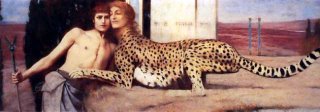 Khnopff (1858-1921) was a Belgian symbolist painter, who studied in l'academie des beaux art with Xavier Mellery, “who taught him to consider painting as an enquiry into the meaning hidden in the soul of things”. When he went to Paris one of his main inspirations was the Pre-Raphaelites (particularly Rossetti and Burne-Jones) and in his return he co-founded Groupe des XX.
Khnopff (1858-1921) was a Belgian symbolist painter, who studied in l'academie des beaux art with Xavier Mellery, “who taught him to consider painting as an enquiry into the meaning hidden in the soul of things”. When he went to Paris one of his main inspirations was the Pre-Raphaelites (particularly Rossetti and Burne-Jones) and in his return he co-founded Groupe des XX.
Hence the pre-Raphaelite link through the adherence to mimesis. (It seems that Khnopff was as interesting a figure as one of them as well… but not now…) His style “combines the visual precision of earlier Flemish artists of the 15th century, the modern realism of the Pre-Raphaelites.” Yet, he seems to have carried (and so did Toorop) the style of the Pre-Raphaelite Brotherhood into a higher level of abstraction and symbolism, whereby he excluded attention to detail and included ways of expressing much deeper enigmatic imagery and internal impulsions. He thought of his art as internal to himself ("One has only oneself" was his motto, and if I’m not wrong the title of one of his paintings), and was called the “painter of sentiments” and “the perfect symbolist”. His oeuvre contains significant affinities with Gustav Klimt, Edward Burne-Jones, and Gustave Moreau.
Khnopff was as interesting a figure as one of them as well… but not now…) His style “combines the visual precision of earlier Flemish artists of the 15th century, the modern realism of the Pre-Raphaelites.” Yet, he seems to have carried (and so did Toorop) the style of the Pre-Raphaelite Brotherhood into a higher level of abstraction and symbolism, whereby he excluded attention to detail and included ways of expressing much deeper enigmatic imagery and internal impulsions. He thought of his art as internal to himself ("One has only oneself" was his motto, and if I’m not wrong the title of one of his paintings), and was called the “painter of sentiments” and “the perfect symbolist”. His oeuvre contains significant affinities with Gustav Klimt, Edward Burne-Jones, and Gustave Moreau.
 One of his main themes was solitude and the image on the right titled as such reminds me terribly of the image created by Luc Besson in the movie The Messenger: The Story of Joan of Arc.
One of his main themes was solitude and the image on the right titled as such reminds me terribly of the image created by Luc Besson in the movie The Messenger: The Story of Joan of Arc.
The rest of my info on Khnopff come from this site.
“It's only as an artist, then, that we can know Khnopff. A stunningly accomplished draftsman over a range of media, he was masterful also in avoiding the two major pitfalls for artists of his time. The first was obsessive realism, dramatically illustrated by Khnopff's older contemporary, the Pre-Raphaelite artist William Holman Hunt, who once starved a goat and drenched it in whitewash after he discovered he could not find a thin-enough white goat to sit for his painting The Scapegoat. Rigid adherence to a narrowly conceived reality was the second danger. Gustave Courbet, a Realist from the generation prior to Khnopff's, famously declared that if someone would only show him an angel, he would gladly paint it. Khnopff and other Symbolist artists had no trouble painting angels (and in some cases "seeing" them).
Contrived symbolism and allegory can also be deadly for art, of course, but like his great Lowland predecessors, such as Jan Van Eyck, Hieronymus Bosch, and Pieter Brueghel, Khnopff had the ability to make his allegories seem fresh and affecting. This particular gift of imagination seems to have been remarkably common in that part of Europe both before and after Khnopff (Magritte was another practitioner), perhaps an effect of life in a historic crucible of religious tension and war.”

